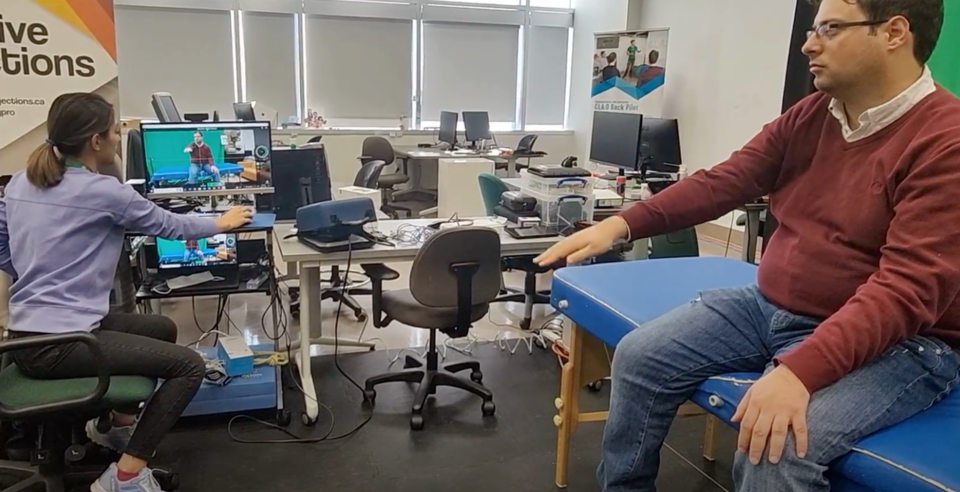To see a specialist, patients in rural Alberta often need to travel at their own expense to a major city. Starting next year, researchers from the University of Alberta will be bringing more specialists to remote clinics through innovative use of video-technology and robotics.
Alberta’s Remote Management of Shoulders Program (ARMS UP) uses "telerehabilitation" equipment to provide remote assessments and counselling for rural patients experiencing shoulder instability or pain. The project was recently awarded $2 million in funding through a Canadian Institutes of Health Research grant, and will connect eight community clinics with hubs in Edmonton and Lethbridge for integrated appointments.
Martin Ferguson-Pell, professor of rehabilitative medicine at the University of Alberta, describes telerehabilitation procedure as essentially an enhanced version of a Zoom call. On one end of the call is a clinician from one of the urban hubs, and on the other is a clinic outfitted with a bundle of technology, including 3D cameras and a robot that can move around the room and interact with the patient.
"It's an uncanny thing, in that when you're using this robot, it feels like that urban clinician is in the room," Ferguson-Pell said.
"It's very important because the patient wants to build a relationship of trust with that virtual connection that they have with the Urban clinician. And the use of the telepresence robot enables the patient to immediately relate more realistically than they would if they were just speaking to us in camera."
Along with improved patient comfort, the robot allows the urban clinician to move the camera as needed for a proper assessment and collect information normally gathered during an in-person exam.
"If you want to measure the range of motion of a joint, if you're in person, you would use what's called a goniometer. And it's basically like a protractor that measures the angle of the joint. Because you can't be hands-on with that person, you need a different way of measuring that joint angle," he said.
"So we have a technology that does that called markerless motion capture. And it's just using a 3d camera and some software in order to make a measurement of that joint angle."
Patients in rural areas often experience poorer clinical outcomes than their urban counterparts because they have greater difficulty accessing appropriate care. The scarcity of specialists also creates additional burdens for hospital emergency rooms, where patients like those struggling with shoulder pain turn to when there is nowhere else to go.
"That's the best that they can find. And so that puts an extra burden on rural emergency services and increased demand on primary care services, which is also difficult to get access to."
ARMS UP is one way of helping reduce the unnecessary use of urgent care services through improved connectivity, he said.
The total package of technology needed for these remote assessments comes with a surprisingly affordable price tag of about $10,000 to 12,000 and requires only minimal training for staff in the rural clinics, Ferguson-Pell said. And once the remote clinic has it, there is no limit to the number of assessments they can perform.
Though they will initially focus on screening and rehab for shoulder pain, the same clinic-to-clinic model could easily be expanded to include other assessments, such as those for strokes or vertigo.
Vertigo is usually related to problems with the inner ear and causes loss of balance and feelings of sea sickness. Patients in rural areas suffering vertigo have shown significant interest in being assessed remotely rather than having to drive to see a specialist, Ferguson-Pell said.
"Because as you can imagine, if you're travelling a long distance and you've got what feels like chronic seasickness, but it's actually vertigo, that's a horrible journey to have to take. And so this is something that can be assessed and treated remotely using the technology that we've been developing."



